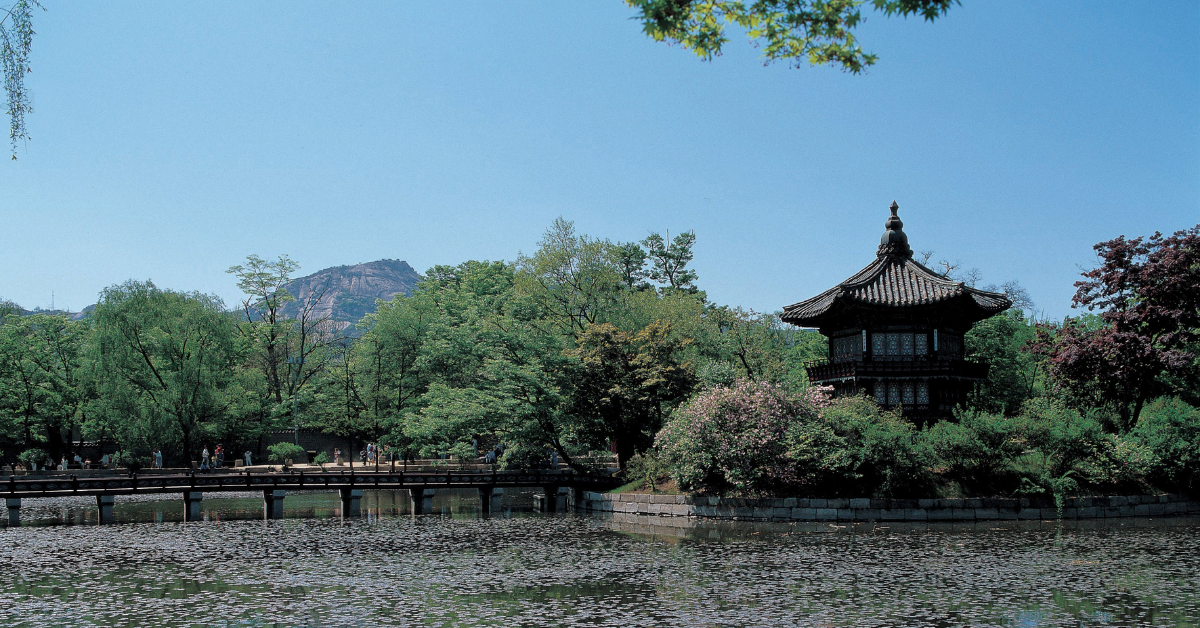The Chinese Garden in western Singapore offers a retreat from the city’s hustle and bustle, allowing visitors to enjoy peaceful moments. With traditional Chinese architecture and sculptures, Japanese travelers often describe it as a place where they can relax and connect with culture.
What is the Chinese Garden
Located in Singapore’s Jurong East district, the Chinese Garden is a large-scale garden designed in traditional Chinese style. Completed in 1975, it was designed by a Chinese architect. Inside the garden, you will find red-tiled towers, stone bridges, and dragon sculptures that evoke the grandeur of the Tang and Song dynasties.
Because the garden is situated away from the city’s skyscrapers, it offers a quiet and spacious atmosphere. It is also connected by a bridge to the Japanese Garden, allowing visitors to experience both Japanese and Chinese landscaping cultures in one place. For locals, it is not only a sightseeing spot but also a beloved place for walking, jogging, and relaxation.
Basic Information about the Chinese Garden
| Item | Details |
|---|---|
| Opening Year | 1975 |
| Architect | Chinese architect |
| Location | Jurong East district |
| Features | Chinese-style towers, stone bridges, sculptures |
| Nearby Facility | Japanese Garden |
Attractions of the Chinese Garden
The garden’s main appeal lies in the harmony between nature and architecture. The seven-story pagoda serves as the garden’s symbol, offering panoramic views of Jurong Lake and the surrounding greenery. Along the lake, breezes make walks refreshing even in Singapore’s humid climate.
There are also zodiac-themed stone statues that are popular for photography. Visitors often take pictures with their zodiac sign, adding cultural fun to the sightseeing. Gates and bridges are also notable photo spots, especially at sunset when the red light illuminates the structures, creating a magical scene.
The layout is not only beautiful but also reflects feng shui principles, with dragons and lions symbolizing prosperity and balance. Thus, the Chinese Garden is more than just a tourist spot—it is also a place for cultural understanding.
Main Highlights
| Highlight | Feature |
|---|---|
| Pagoda | Seven stories high, offering scenic views |
| Zodiac statues | Popular photo spots |
| Red-tiled gates | Iconic examples of Chinese architecture |
| Dragon carvings | Reflect feng shui design |
| Artificial lake & stone bridges | Blending of nature and architecture |
Reviews from Japanese Visitors
Japanese visitors generally give favorable reviews, often mentioning “tranquility,” “photo opportunities,” and “cultural experiences.” Unlike the bustling city areas, the garden provides a peaceful atmosphere.
However, there are also concerns about “inconvenient access” and “aging facilities.” Since the garden is located outside the city center, short-term tourists sometimes feel it is less convenient to visit. The limited signage and explanatory materials are also noted as areas for improvement.
Still, for those who value quiet spaces, these very aspects become an attraction. With fewer crowds, the garden is considered ideal for travelers who want to enjoy a slow-paced exploration.
Japanese Visitors’ Opinions
| Category | Positive Views | Improvement Requests |
|---|---|---|
| Scenery | Beautiful garden and architecture | Some areas feel outdated |
| Access | Reachable by MRT | Far from city center |
| Experience | Quiet and relaxing | Lacks liveliness |
| Cultural Value | Provides insight into Chinese culture | Needs more explanations |
| Convenience | Not crowded, comfortable | Few dining facilities |
Evaluation Summary Table
Visitor impressions vary depending on their purpose.
| Purpose | Satisfied Visitors | Visitors Who May Feel Lacking |
|---|---|---|
| Photography | Those who want to capture architecture and statues | Those seeking entertainment |
| Strolling | Those who enjoy peaceful time | Those who prefer lively spots |
| Cultural Experience | Those interested in Chinese traditions | Those less interested in history |
| Family Travel | Families seeking quiet time with children | Families looking for attractions |
Recommended Visiting Tips
The best times to visit are early morning or around sunset. Mornings are cooler and more comfortable for walking, while sunsets create spectacular photography opportunities. During midday, bringing a hat or umbrella is advisable due to the strong sun.
For photography, the pagoda, zodiac statues, dragon carvings, and red-tiled gates are the top choices. Combining the visit with the Japanese Garden allows travelers to compare Japanese and Chinese landscaping cultures in one day.
Suggested Ways to Enjoy
| Activity | Point |
|---|---|
| Photography | Capture iconic gates and pagoda for social media |
| Strolling | Relax along the lakeside paths |
| Cultural Comparison | Walk through both Japanese and Chinese gardens |
| Family-friendly | Children enjoy exploring zodiac statues |
| Long Stay | Observe locals practicing tai chi in the morning |
Combining with Nearby Attractions
The Chinese Garden is surrounded by Jurong Lake, where visitors can enjoy picnics and walking. The Jurong East area also features large shopping malls, so it is easy to combine sightseeing with shopping and dining. After a peaceful walk in the garden, many Japanese travelers enjoy visiting malls and restaurants nearby.
Nearby Recommended Spots
| Spot | Feature |
|---|---|
| Jurong Lake | Perfect for lakeside strolls and picnics |
| Japanese Garden | Experience Japanese landscaping for comparison |
| IMM Mall | Large outlet stores |
| Westgate | Convenient for shopping and dining |
| Science Centre | Educational, family-friendly attraction |
Conclusion
The Chinese Garden is a unique destination offering tranquility and cultural value different from Singapore’s modern city attractions. Japanese visitors appreciate it for being a place where they can relax and immerse in Chinese traditions, though some note accessibility and outdated facilities as drawbacks.
Nevertheless, it remains ideal for travelers interested in photography, cultural learning, or peaceful walks. By combining it with nearby attractions, visitors can enhance their experience and add a refreshing perspective to their Singapore trip.






